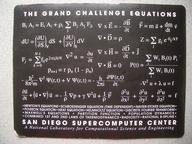Quiz Answer Key and Fun Facts
1. An exothermic reaction often involves the transfer and transformation of energy. Which of the following is likely to happen in an exothermic reaction?
2. Energy transferred during an exothermic reaction can manifest itself in several forms. Which of the following is NOT one of them?
3. Now we're cookin'; what is enthalpy?
4. The change in enthalpy is the difference in energy at the end of a reaction compared to its beginning. Which of the following describes the energy change in an exothermic reaction?
5. We've established that an exothermic reaction releases energy. Therefore its opposite must be one that absorbs energy and also needs energy to make it happen. Which of the following reactions could this be?
6. The "arrow of time" is a concept in the Second Law of Thermodynamics. How else can this concept be represented?
7. The Third Law of Thermodynamics is poorly understood but, at its heart, it states entropy can never be negative. Which one of the following is a sign of decreasing entropy?
8. There are four laws governing thermodynamics. Three are known as the first, second, and third laws. What is the last thermodynamics law known as?
9. A thermodynamic system may be defined by how permeable its boundaries are to transfers of heat, work, and matter. In which of these systems do the boundaries permit transfer of energy as work, but prohibit transfer of matter and energy as heat?
10. In my senior year of high school my biology teacher said that if I didn't put milk in my coffee it would cool faster and I would be able to drink it sooner. She was not quite right. What really happens when milk is added to black coffee?
Source: Author
purelyqing
This quiz was reviewed by FunTrivia editor
rossian before going online.
Any errors found in FunTrivia content are routinely corrected through our feedback system.
